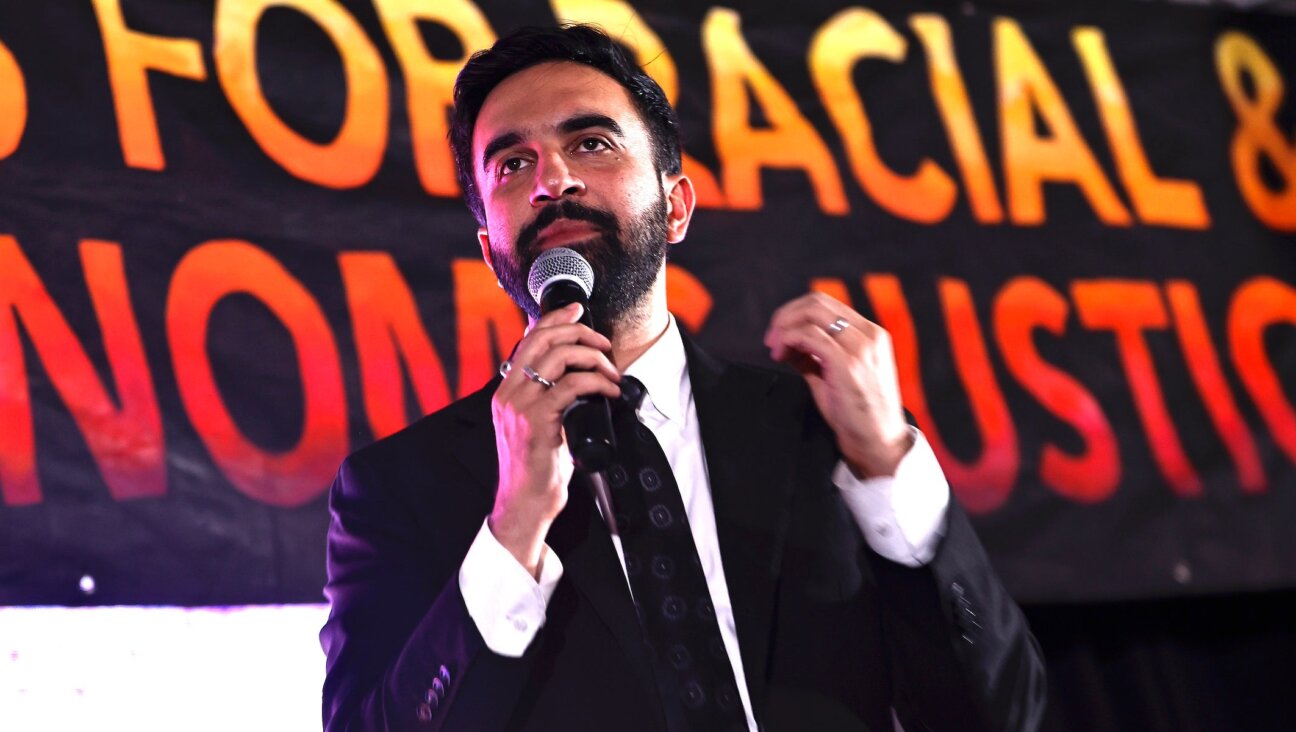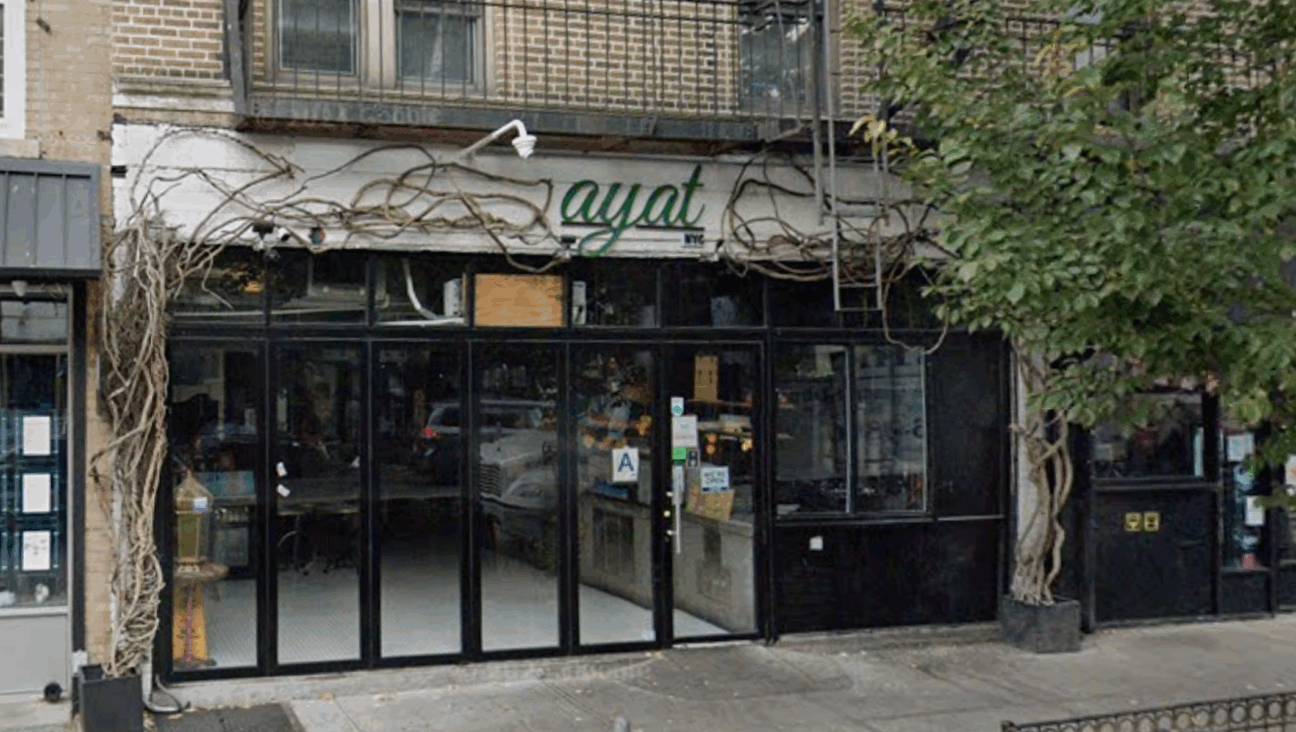Nun Who Inspired Gibson Is Moved Toward Sainthood
If it weren’t for Mel Gibson, Sister Anne Catherine Emmerich might have remained an obscure figure, unknown to everyone but select Catholic scholars and a cult of the devoted.
But Gibson’s inclusion of some of the 18th-century nun’s antisemitic visions in his controversial blockbuster “The Passion of the Christ” has placed her in a spotlight of sorts, nearly 180 years after her death. “The Dolorous Passion of Our Lord Jesus Christ,” a book attributed to the nun, has been selling briskly, leading many people to learn through the Internet about a nun of whom they otherwise might never have heard.
Then, this week, the ultimate honor was announced: The Vatican is planning to make Emmerich a saint.
According to church officials, on October 3, Pope John Paul II will beatify Emmerich — the penultimate step before canonization. German Bishop Reinhard Lettmann said the ceremony would take place in Muenster in western Germany, where Emmerich, an Augustinian nun, lived from 1774 to 1824.
The Vatican insists she is being honored for her virtuous and holy life, and not the problematic book, in which Jews are described as hook-nosed demons who tortured Jesus and who are responsible for his death.
But both Catholic and Jewish critics are charging that the Vatican is sending the wrong message at a time when antisemitism is rising in the world.
“I have deep concerns about this,” declared Father John Pawlikowski, president of the national Council of Centers on Jewish-Christian Relations, in an interview with the Forward. Pawlikowski, a liberal Catholic, added that “without question” Emmerich’s visions “bear deep-seated antisemitic stains.”
“Nothing should be done to ‘honor’ such statements if we are to take seriously the remarks of Pope John Paul II that antisemitism is a sin,” Pawlikowski said.
The Anti-Defamation League — whose national director, Abraham Foxman, was one of the leading critics of Gibson’s film — sent out a carefully constructed letter last week to top Vatican leaders, urging them to reconsider.
“It is with great distress that we have learned of the plans to beatify Anne Catherine Emmerich,” read the letter sent to Cardinal Walter Kasper, president of the Vatican’s Commission for Religious Relations with the Jews; Cardinal Jose Saraiva Cardinal Martins, head of Rome’s Congregation for the Causes of the Saints; and Baltimore Archbishop Cardinal William Keeler, president of the Committee on Catholic-Jewish Relations of the United States Conference of Catholic Bishops.
The ADL letter acknowledges that appointing saints is the church’s own business. Nevertheless, Foxman noted that “hatred and antisemitism were fomented in her name.”
“At a time when Jews are concerned and disillusioned by Mel Gibson’s film… we believe that the beatification… could cause harm to Christian-Jewish relations,” Foxman said in a statement. “The disturbing conclusion that could be drawn from this beatification is that her antisemitic views, even if only attributed to her, are being discounted.”
The ADL letter requests that the impact on Christian-Jewish relations be considered “a major factor in the beatification process, and that this consideration should outweigh the benefits of beatification at this time.”
Veteran interfaith expert Rabbi James Rudin called the announcement to beautify Emmerich “a setback” for Catholic-Jewish relations because the nun is so closely identified with controversial scenes in Gibson’s highly successful film, which has earned about a half-billion dollars since opening last February.
“The movie has made her a hot property,” said Father Thomas Reese, an expert on the Vatican and editor of the respected Catholic magazine America. But, he added, “it seems to me pushing her [beatification] is not very helpful. I would prefer they drop her and move on to other cases.”
Emmerich was originally selected for beatification in the 1920s. But the process was suspended in 1928 when questions arose about who actually wrote her diaries, which are filled with vivid descriptions of Jerusalem even though the unschooled nun never left her village. Today, many scholars believe that the 19th-century German Romantic poet Clemens Brentano, who recorded and then embellished Emmerich’s mystical visions, wrote the diaries.
Her beatification process was reopened in 1973 and approved last July. Experts said they did not know for sure why her candidacy suddenly was reactivated this year.
A spokesman for the bishops’ conference did not return several messages.
Gibson, who follows a breakaway traditionalist Catholic church, has stated publicly that he carries around a cloth artifact believed to have belonged to Emmerich. Gibson could not be reached for comment, a spokesman said Monday.
The 47-year-old Oscar-winning director has admitted drawing on Emmerich’s book for inspiration. In April, he told ABC News’ Diane Sawyer that he obtained hundreds of old books several years ago from a nunnery that had closed down. He said that one night, while doing research for the film, he reached up for a certain book and Emmerich’s tumbled into his hands instead; the vivid imagery of the nun’s visions “supplied me with stuff I never would have thought of.” Gibson said he did not find any antisemitic references in the diaries. He stressed that the details of his script were based solely on the Gospels.
Yet Emmerich’s clear influence on the film has been widely noted by critics, particularly in one brutal scene in which Jesus’ Jewish captors hang him over a bridge by chains and then yank him back up again. Emmerich’s book also portrays a passive Pontius Pilate at variance with the despot portrayed in the Gospels, and ties the destruction of the Temple to Jesus’ death. Both images were included in the film.
Moreover, unlike the four Gospels, in which description of Jesus’ scourging amounts to only a few sentences, Emmerich’s account of Jesus’ death is highly detailed, offering excruciating scenes of Jesus’ flayed skin and bloody body, while a crowd of bloodthirsty Jews look on.
“Far from exciting a feeling of compassion in the hard-hearted Jews,” Emmerich’s book says, Jesus’ suffering “simply filled them with disgust and increased their rage. Pity was, indeed, a feeling unknown in their cruel breasts.”
Pawlikowski, director of Catholic-Jewish Studies at Chicago’s Catholic Theological Union, believes the push for Emmerich is part of an ongoing internal church struggle between progressives and traditionalists that is intensifying at the end of the long reign of Pope John Paul II.
While some progressive Catholic scholars and academics loudly criticized Gibson’s film for violating American Catholic guidelines on how to portray Jews in the Passion story, bishops’ conference officials were relatively silent.
Kenneth L. Woodward, author of “Making Saints: How the Catholic Church Determines Who Becomes a Saint, Who Doesn’t and Why” (Touchstone Books), rejected the notion that religious politics are behind Emmerich’s beatification. “It would have come regardless,” said Woodward, a veteran religion editor at Newsweek magazine. “She is being beatified not because of the book, but in spite of it.”
David Gibson, author of the acclaimed “The Coming Catholic Church” (Harper SanFrancisco), said that for John Paul II, Emmerich’s value as a model of holiness outweighs any other issue, and her sainthood should proceed apace.
“For this pope, it starts and ends with holiness and the fidelity to Catholic teachings,” he said.














